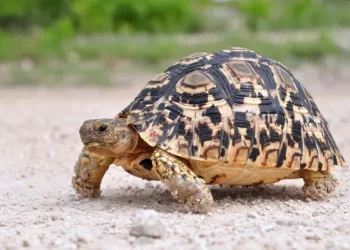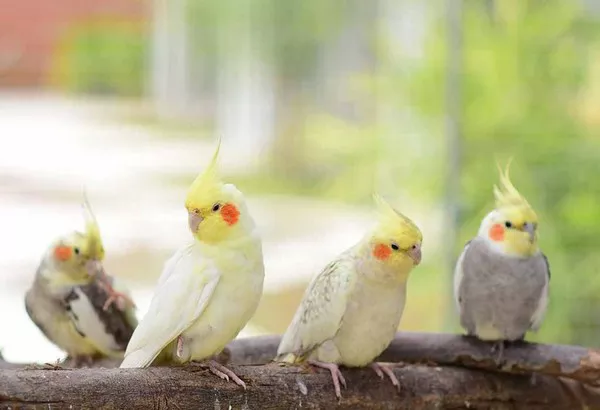Turtles, renowned for their resilience and adaptability, are ectothermic creatures whose body temperature is regulated by their environment. This characteristic makes them particularly vulnerable to temperature extremes. In the wild, turtles inhabit a variety of climates and ecosystems, from tropical rainforests to temperate ponds and even arid deserts. Understanding how temperature fluctuations affect turtles is crucial for their conservation, welfare, and captivity management.
The Physiology of Turtles: Cold-blooded Adaptations
Ectothermy: The Basis of Turtle Thermoregulation
Turtles, like other reptiles, are ectothermic, meaning they rely on external heat sources to regulate their body temperature. This adaptation allows them to conserve energy by not needing to produce heat internally. Instead, turtles bask in the sun or seek out warm environments to raise their body temperature and become more active.
Metabolism and Temperature Dependence
The metabolic rate of turtles is directly influenced by environmental temperature. Warmer temperatures increase metabolic processes, including digestion, growth, and reproductive activities. Conversely, colder temperatures can slow down metabolism significantly, affecting overall energy levels and physiological functions.
The Effects of Cold Temperatures on Turtles
Hypothermia: Risks and Symptoms
When turtles are exposed to temperatures below their preferred range, they become susceptible to hypothermia. Hypothermia occurs when the body temperature drops below the optimal level for normal physiological function. For turtles, the specific effects of hypothermia vary depending on the severity and duration of exposure.
Behavioral Responses to Cold
Turtles exhibit various behaviors to mitigate the effects of cold temperatures:
Basking Behavior: Turtles often bask in the sun to absorb heat and raise their body temperature. This behavior is crucial for maintaining metabolic activity and overall health.
Seeking Shelter: In colder conditions, turtles may seek shelter in burrows, under vegetation, or in deep water to avoid exposure to cold air or freezing temperatures.
Hibernation and Torpor: Some turtle species undergo hibernation or torpor during colder months, reducing metabolic activity to conserve energy until warmer temperatures return.
Physiological and Health Impacts
Impact on Metabolism and Digestion
Cold temperatures can slow down metabolic processes in turtles, affecting their ability to digest food properly. This slowdown can lead to digestive issues, reduced appetite, and nutrient absorption problems, which may impact overall growth and health.
See Also: Do Pet Turtles Need Light at Night?
Respiratory Challenges
Cold temperatures can also affect a turtle’s respiratory system. As ectotherms, turtles rely on external temperatures to regulate their breathing rate and oxygen intake. Cold temperatures may slow down respiratory function, potentially leading to respiratory infections or complications, especially in species with stricter temperature requirements.
Immune System Suppression
Prolonged exposure to cold temperatures can weaken a turtle’s immune system, making them more susceptible to infections, parasites, and diseases. This vulnerability can have significant implications for wild populations and captive turtles alike, requiring careful monitoring and management to prevent outbreaks and ensure overall health.
Behavioral Adaptations in the Wild
Seasonal Changes and Migration
In temperate regions, turtles undergo seasonal migrations to find suitable habitats for nesting, feeding, or hibernation. Cold temperatures trigger these migrations, with turtles seeking warmer environments during colder months to maintain vital functions and reproductive cycles.
Aquatic Adaptations
Aquatic turtles, such as freshwater and marine species, have evolved specific adaptations to cope with colder water temperatures:
Cold Tolerance: Some aquatic turtles can tolerate colder water temperatures by slowing down their metabolism and reducing activity levels.
Winter Dormancy: In regions with harsh winters, aquatic turtles may enter a state of winter dormancy or brumation underwater, conserving energy until temperatures rise.
Management and Conservation Considerations
Captive Care: Providing Optimal Conditions
For pet owners, wildlife rehabilitators, and zookeepers, understanding the temperature requirements of turtles is essential for providing proper care and ensuring their well-being in captivity. Key considerations include:
Habitat Design: Creating a habitat that includes basking areas, UVB lighting, and thermal gradients to allow turtles to regulate their body temperature effectively.
Temperature Monitoring: Regularly monitoring temperatures within the enclosure to ensure they remain within the optimal range for the species.
Heating Options: Using heat lamps, heat pads, or ceramic heat emitters to provide supplemental heat when ambient temperatures are too low.
Conservation Challenges
In the wild, turtles face increasing threats from climate change, habitat loss, pollution, and human activities. Understanding how temperature extremes impact turtles is crucial for developing effective conservation strategies:
Climate Change Effects: Rising global temperatures can disrupt natural temperature patterns, affecting turtle populations’ distribution, reproductive success, and survival.
Habitat Preservation: Protecting critical habitats, such as nesting beaches, wetlands, and freshwater ecosystems, is vital for maintaining healthy turtle populations and promoting resilience against climate-related challenges.
Case Studies: Turtles and Cold Stress
Cold-Stunned Sea Turtles
Sea turtles are particularly vulnerable to cold stress events, such as cold stunning, which occurs when water temperatures drop rapidly in coastal areas. Cold-stunned turtles become lethargic and may wash ashore, requiring rescue and rehabilitation efforts to recover and release them safely back into warmer waters.
Overwintering Strategies in Temperate Turtles
Temperate turtles, including box turtles and painted turtles, exhibit various overwintering strategies to survive colder temperatures:
Burrowing: Digging underground burrows below the frost line to avoid freezing temperatures.
Mud and Leaf Litter: Burying themselves in mud, leaf litter, or shallow water bodies that provide insulation against cold air.
Conclusion:
Understanding the impact of temperature extremes on turtles is essential for their conservation, management in captivity, and protection in the wild. Whether in natural habitats or controlled environments, providing turtles with optimal temperature conditions is crucial for their health, behavior, and long-term survival. By implementing effective monitoring, management practices, and conservation efforts, we can mitigate the risks associated with cold stress and ensure a sustainable future for these remarkable reptiles.
Related Topics:


























